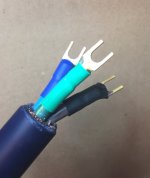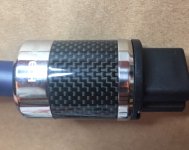Assuming that you are using copper wire as the conductor... In a well designed AC plug, the mechanism firmly securing the stripped wire ends inside the plug should provide full contact surface area whereby oxidation would not a be problem. Be sure to strip off only as much of the dielectric as is necessary for the connection. That being said, one can always "tin" the exposed wire with solder to prevent any oxidation if you are concerned. There are plenty of internet videos demonstrating this technique. (Note: A few specialty wires are manufactured as Litz conductors where each individual copper strand in the conductor is coated with an insulating lacquer. This wire requires the stripped ends be tinned before any connection is made.)
Alternatively, one can use tinned-copper wire conductors where the individual copper wire strands have been plated with a very thin coating of tin. Here, the "tinning" has already been done for you. There are a few power cable makers using this type conductor wire with excellent results.


